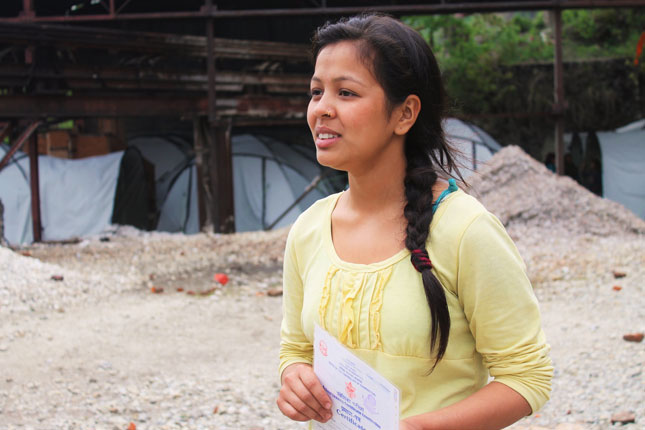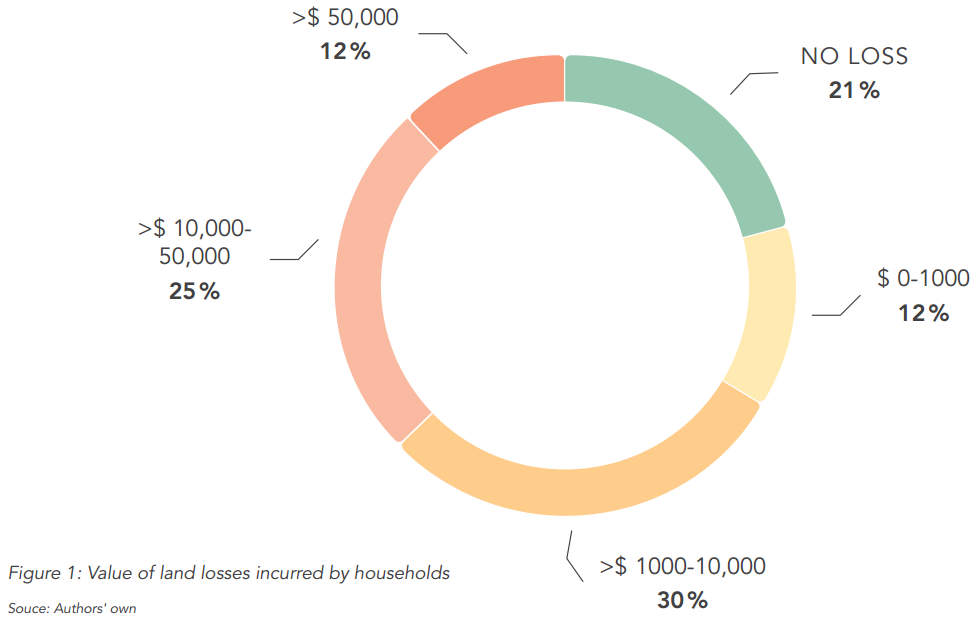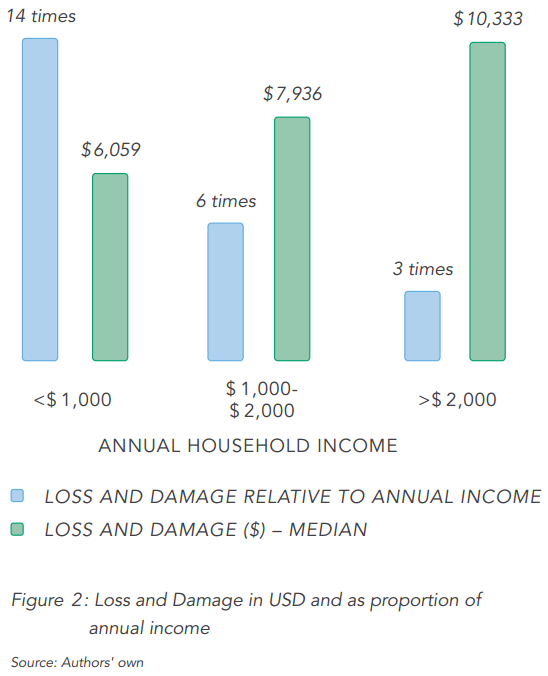-
After the Landslide: A Closer Look at Loss and Damage in Nepal

It had been raining for two full days when the landslide came. Nirjala Adhikari vividly remembers the instant it hit her village in Sindhupalchok District, Nepal. “It was a very scary moment, and I couldn’t think of anything else than grabbing my mobile phone and my school certificate before I ran out of the house,” she recalled. “I secured my certificate because only this will help me establish a bright future.”
Nirjala, who was 18 when we interviewed her, now lives with her family and nine other affected households in tents pitched in the shadow of an abandoned factory. As well as taking her home, the landslide of August 2014 destroyed her school and the family farm, which was their main source of food and income.
Nirjala feels lucky to have survived at all, but the exact ways in which her community prepared for and was affected by this disaster are important to the global climate research community. An innovative research project by United Nations University Institute for Environment and Human Security, published in Natural Hazards and Earth System Sciences, recently examined the range and extent of the “loss and damage” caused by the landslide to hundreds of households.
Building on methods designed by the Institute for Environment and Human Security, a team of six enumerators surveyed 234 households to gain an understanding of the wide range of economic and non-economic effects sustained by the households in the area as a direct result of the landslide. The study also looked into the effectiveness of the various preventive and coping measures adopted by the respondents, and analyzed what might have stopped households from doing more to protect themselves.
One of the most severe impacts of the landslide was loss of land. Two thirds of the respondents (68 percent) estimated the losses and damages to land for their households at more than $1,000 and for over half of this group, the losses were more than $10,000 (see Figure 1).
We also found that respondents with an annual income of less than $1,000 incurred median losses equivalent to 14 times their average annual income, whereas respondents with an annual income of more than $2,000 had median losses roughly three times their annual income on average. Wealthier households incurred higher losses in terms of total monetary value (see Figure 2), but poorer households lost more in relative terms and will have more difficulty recovering.
Raju Pandit Chhetri, the Nepalese executive director of the Prakriti Resources Center, a Kathmandu-based non-government organization, advised the researchers in several stages of the project. He called the effort “an innovative and useful people-centered study.”
“Nepal is highly prone to natural hazards such as landslides, flooding, and droughts,” he said. “Until now, however, we have lacked a scientific understanding of what loss and damage following such an event looks like at a local level. With these findings, we can analyze how communities are protecting themselves against natural hazards and what can potentially be done to help them become more resilient.” Indeed, such a scientific understanding of what loss and damage looks like is lacking almost everywhere.
The study also examined what communities do to minimize the potential consequences of a disaster ahead of time. Notably, we found that a majority of households (65 percent) adopted some preventive measures prior to the 2014 landslide. Livelihood diversification was found to be the most common tactic, with 41 percent of households finding new ways of earning money to supplement income from agriculture. Meanwhile, around 4 in 10 households erected physical barriers to help protect from flooding or landslide. In many cases, these efforts were overwhelmed. Indeed, one of the most common preventive measures, the installation of barriers, was found to be among the least successful. By contrast, moving the entire household out of the high risk area was the most effective preventive measure.
Though the attribution of major disasters like the August 2014 Nepal landslide to climate change remains a challenge, our research shows that loss and damage is not only an issue for the future, but something that vulnerable communities are experiencing right now. Our research also shows that people are not passive victims of climatic changes or natural events. They do much to avoid loss and damage but, as seen in this case study, the stressors are too often overwhelming.
The Nepal loss and damage case study was launched at COP-22 in Marrakesh, Morocco.
Kees van der Geest is a senior researcher at the United Nations University Institute for Environment and Human Security.
David Hewitt is a digital communications associate at the United Nations University Institute for Environment and Human Security.
Sources: Natural Hazards and Earth System Sciences, United Nations University.
Photo/Image Credit: Used with permission courtesy of Kees van der Geest.
 A Publication of the Stimson Center.
A Publication of the Stimson Center.








